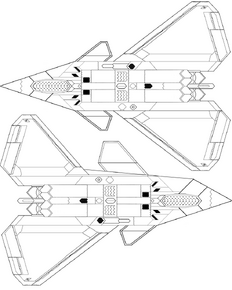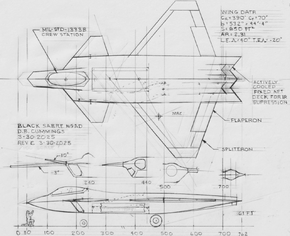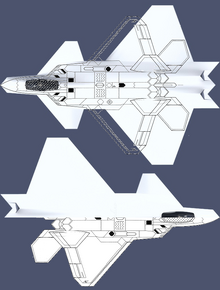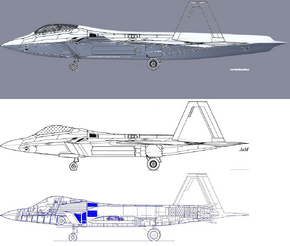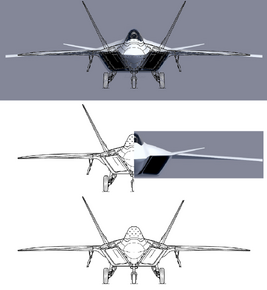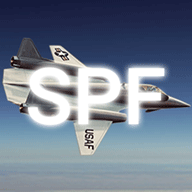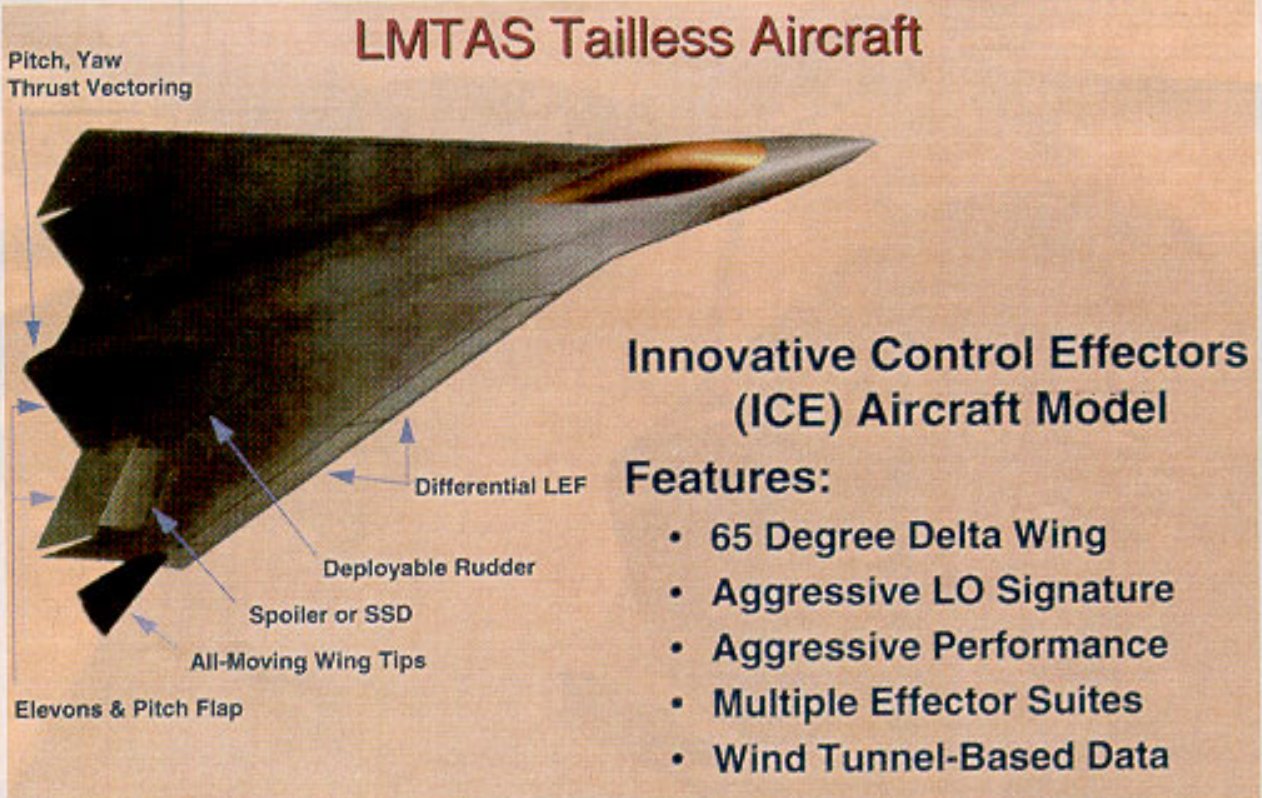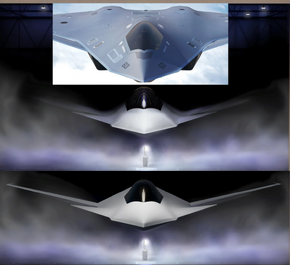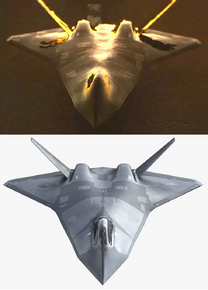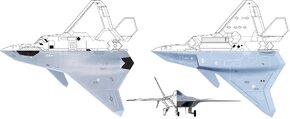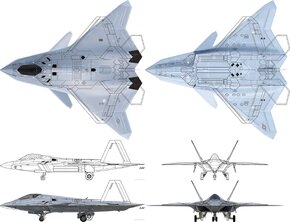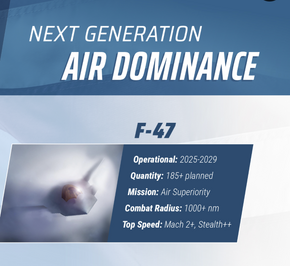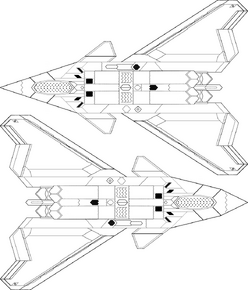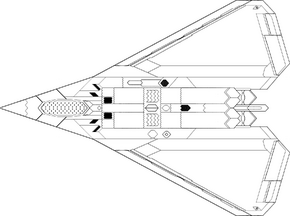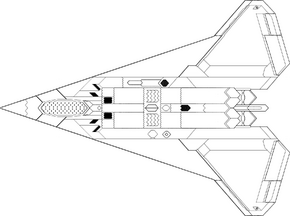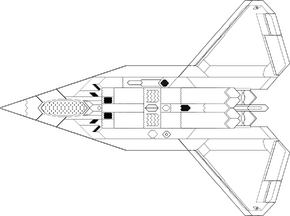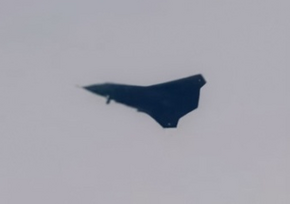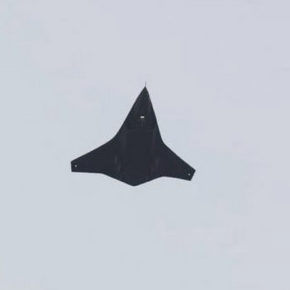Bhartiya sainik
Member
Here is the V2 with wing lengthened, leading edge angle increased.Perhaps the easiest full-scale F-47 look-alike TD/prototype modified from existing jet F-22.
The wing & tail-stab positions are interchanged & rudders removed.
It is a quick, simple,notional edit, many small flaws can be observed by people into 3D CAD.
Making its front, side, bottom views w/o 3D S/w by just imagining is very tedious at this time, what i used to do on graph sheetsin school-days in 1990s watching F-117, B-2, developing F-22 on Discovery channel. The good old days
Anyways, i wonder if LM built such a jet for competition or research.
View attachment 52635
The canard had to be shortened, maintaining planform design. With TVC nozzles, big canards may not be required.
I made the nose narrower, triangular to lessen drag & RCS.
Comparison with V1 is also shown.
The day i'll get a light weight, old, stable version of some 3D CAD S/w for my old laptop, i'll start translating these into 3D.
Feedbacks are welcome, i'm making a V3 also.
